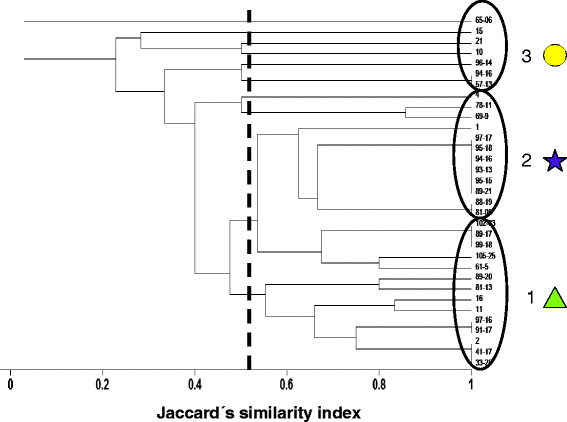The metazoan parasite communities of the shoal flounder (Syacium gunteri) as bioindicators of chemical contamination in the southern Gulf of Mexico
- PMID: 25428400
- PMCID: PMC4271329
- DOI: 10.1186/s13071-014-0541-3
The metazoan parasite communities of the shoal flounder (Syacium gunteri) as bioindicators of chemical contamination in the southern Gulf of Mexico
Abstract
Background: Because agriculture and offshore oil extraction are significant economic activities in the southern Gulf of Mexico, high concentrations of nutrients and hydrocarbons are expected. As parasite communities are sensitive to environmental impacts, these contaminants should have an effect on metrics such as species richness, relative abundance and similarity. Consequently, these community metrics can be used as indicators of aquatic environmental health. Our objectives were to describe the parasite communities of the shoal flounder Syacium gunteri and to determine potential thresholds above which environmental contaminants become major controlling factors of parasite community metrics.
Methods: The study area included 33 sampling sites in the southern Gulf of Mexico, where benthic sediments, water and shoal flounder individuals were collected. Data on ecto- and endo-parasites from flounder and nutrients, contaminants and physicochemical variables from the water and sediments were obtained. The statistical associations of the parasite community metrics at the component and infracommunity levels and the environmental data were analysed using redundancy analysis (RDA).
Results: Overall, 203 shoal flounder were examined for parasites, recovering 13 metazoan parasite species, and 48 physicochemical (e.g. temperature, nutrients) and contaminant (e.g. hydrocarbons, heavy metals) variables were obtained. The larval stages of the cestode Oncomegas wageneri and the nematodes Pseudoterranova decipiens and Hysterothylacium sp. were numerically dominant at the component and infracommunity levels. The parasite community metrics had significant negative statistical associations with both nitrate and total PAHs. With the exception of these two chemicals, which exceeded the threshold effect levels (TELs), no other environmental variable exceeded the range considered safe for marine organisms.
Conclusions: The community metrics chosen generally had robust statistically significant associations with both physicochemical and contaminant variables, which supports the ecological relevance of these parameters as indicators of aquatic environmental health. Within the study area, the shoal flounder and their parasites live in a polluted environment with relatively high levels of hydrocarbons and nitrate. Regarding nitrate, we emphasise that if uncontrolled sewage discharge continues in the southern Gulf of Mexico, hypoxic conditions similar to those caused by the Mississippi river can be expected in the near future.
Figures



References
Publication types
MeSH terms
Substances
LinkOut - more resources
Full Text Sources
Other Literature Sources
Research Materials

